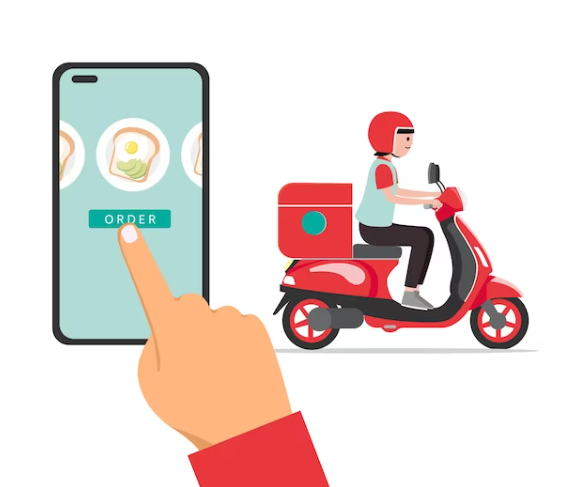How Entrepreneurs Will Make Profit Through Food Ordering App?
According to Statista, the total market size of the online food industry is $1.22 trillion this year(2024). It is divided into two categories: online meal delivery and grocery delivery. Online meal delivery is $780 billion, and grocery delivery is $440 billion. This industry is growing at 9.49% annually, and the average spent per user in the online grocery market is $452.40. Let’s understand how entrepreneurs will make profits through food ordering apps.
Proper Market Research
Entrepreneurs must gather all the information regarding food-ordering apps. They should also consider the location, such as a college campus or any metro city, where they launch an app that goes viral quickly. See how much your competitors are making revenue and profit. Understand their marketing techniques for customer acquisition. Learn how they use social media and digital marketing to attract new customers.
Pricing Analysis
Entrepreneurs have automated pricing calculations within the app to reduce human errors. Pricing depends on distance and booking time. If you want to attract new customers quickly, the price per order should be equal to or less than the competitor’s price.
These big players have changed how food is ordered online, so they have invested a lot of money in customer acquisition because customers didn’t know anything about ordering food online. So, entrepreneurs don’t have to invest much money in acquiring new customers. Now, people know online food delivery, and they trust it.
Focus on Customer Retention
Customer retention is important in this type of business to have a successful application that makes a decent profit margin. Entrepreneurs should give a heavy discount to their new customers so they think about returning and ordering food. Consider these factors for customer retention:
- Seamless user experience and interface
- Multiple payment options
- Live tracking of rider
- Order updates through push notifications
- Discounts and referral codes
These are all features required for a good customer experience and to increase customer retention.
Revenue Model of Food Ordering App
Since the COVID-19 pandemic, most businesses are down as the online food industry grows annually. People can’t go outside and eat, so food-ordering apps get so much attention and increases revenue. So entrepreneurs must consider developing a white label delivery platform from an experienced company that makes a reliable app to earn profits. Let’s discuss the different sources of income in online food ordering apps:
Delivery Charges
The app charges the customer for order delivery each time. The application has to manage all the expenses, such as the delivery partner’s fixed salary and additional commission if the location is far away. These companies do not have a role in food preparation; they just have to ensure food gets delivered on time.
Delays or mishandling lose customer retention. Those people who are paying for the subscription then they will get free delivery. The minimum order value required to get the free delivery.
In-app Advertising
In-app advertising is crucial to generating revenue. The app provides some vacancies for companies to post ads and receive money for that.
Restaurants and eateries must post their ads on the app because all the visitors come there to order food, so it’s a golden opportunity to post your ads and reach a broader audience. Their revenue will increase as they reach the public’s mass level. The restaurant offers parcel service or dine-in; there were only two options for getting food.
Subscription Model
Many subscription models exist for online food delivery, such as weekly, monthly, quarterly, or annually. If the customer has paid for the subscription, the delivery will be free if the order exceeds the minimum order value. This is the main recurring revenue stream of online food ordering apps. When the customer pays for the subscription, they like the services and want to attach to the app for a long time.
The subscription model is the backbone of online food delivery platforms, providing a steady income stream. Customers who opt for these subscriptions not only enjoy perks like free delivery but also tend to become loyal users, contributing to the app’s long-term success.
Commission from Restaurants
The app charges a bit of money for each food order made at the restaurant. To keep going strong, the online food ordering app must ensure customers and restaurant owners have a smooth experience.
Read also:- Top 10 Best Text Messaging Apps For Android
Restaurant owners can easily check how much they make daily using the app. This setup helps the app stay afloat while providing a helpful service to both sides. It’s like a little fee for the convenience it offers everyone involved.
So, when you order your favorite meal through the app, you’re not just getting food delivered to your doorstep but also helping keep the whole system running smoothly. It’s a win-win situation for everyone!
Surge Pricing during Peak Hours
When there is a full rush in a specific area, and drivers are limited in fulfilling the order, the delivery prices are slightly higher than normal due to high demand and limited supply. The prices can be increased when it is raining. These are normally increased during weekends and holidays. Customers who don’t have to pay the premium charges can wait for their food to be delivered.
Conclusion
In summary, entrepreneurs can earn good money by using food-ordering apps. These apps make it easy for people to order food from home. Using technology, entrepreneurs can smooth the ordering process, save money on expenses, and reach more customers. The data they collect helps them understand what customers like and adjust their offerings and marketing.
Entrepreneurs can profit from food-ordering apps as more people want food delivered to their doorsteps. This growing market offers entrepreneurs a great opportunity to dive into and succeed.




